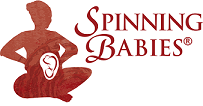When I speak in Academia I’m asked if my approach is evidence based. Its funny because first I’m invited. The nurses, like a nurse named Nancy, tell me how excited they are that I’m coming. They share their goals for integrating the approach into the hospital and share their dreams of spreading the solutions to obstructed labor which they are experiencing themselves with the help of my Spinning Babies approach. We set a date for me to come out and talk with the staff, offer a workshop, start applying for the CEUs needed by their particular group of nurses and then, a month or two into planning, even weeks before arrival, Nancy, or Christine, or another nurse calls me back, and sheepishly explains, So-and-so saw that you were a homebirth midwife and wants the references for the studies that support your claims and techniques. Can you prove that these work.
So-and-so means prove it on paper, S/he doesn’t mean with a pregnant woman in labor.
I could say, oh yes, I have three pages of references and more except I don’t like participants to have to shuffle through more than 3 pages of citings for a 7 hour workshop. Some of them are even within the 4 year publishing requirement.
But seriously, co-madres, I would need about 28 studies all done in the last 4 years to satisfy the Ivory Tower Docs in New England. And which universities today are working that hard to research the reduction of caesarean due to breech, posterior, oblique lie, transverse lie, transverse arrest, brow, face, deflexed and asynclitic fetal positions and presentations?
Baby won’t come out? Chop her.
Wait, you mean, give her more time? Labor room hours are expensive. Chop her.
She doesn’t want a cesarean? Scare her.
If she is in labor, tell her that her baby could die, but if she is still pregnant, tell her she’ll wet her pants.
Evidence based studies show that vaginal birth isn’t significantly worse for bladder incontenence than cesarean surgery six months out from birth, but yet, Professor Philip Steer steered his Obstetrical students and followers to drop the bladder bomb on pregnant women to manipulate them into asking for an elective cesarean in his Editorial, Caesarean section: an evolving procedure?. He reassures OBs that the mother he is conning will not likely have heard of a neighbor who died from complications of a cesarean but she’ll likely know an older woman who leaks in her pants occasionally.
BJOG: An International Journal of Obstetrics & Gynaecology
Volume 105, Issue 10, pages 1052–1055, October 1998
Within two years of his article women were telling me they were choosing cesareans because they didn’t want to wet their pants. How’s that working now? See the studies that show little difference after 6 months and no difference after age 50. (Bridge pose, baby. And pelvic floor balancing.)
Please stop thinking I’m a fanatic, which you might about now. Cesareans can be life savers. I KNOW that! But when the rate goes up from 5% to 35% and more in 4 decades and evidence based studies show 10% is ideal and over 15% unjustifiable and yet we have this kind of pro-chop publicity in our prenatal exam rooms,
How can we all stand in the choir and sing, Evidence Care Come Be My Savior?
Right now we are short of new evidence on Shoulder Dystocia techniques, with the glorious exception of two articles in 2011 by Leung, and Hoffman. I love those guys for their proof that bringing out the posterior shoulders is the most successful technique. I’ve been using the steps towards bringing out the posterior arm as the basis of my Resolving Shoulder Dystocia class, though when you do my first three steps, you rarely have to bring out the posterior arm.
Ok, after this rant, I came across, quite serendipitously Rebecca L. Dekker, PhD, RN, APRN is an Assistant Professor of Nursing Blog, Evidence Based Birth. I’m chuckling here because if we had evidence based birth in this country we would have a cesarean rate under 15%, breech babies being born vaginally, and a doula in every birth room. But Rebecca does a really fine job on her blog and I took her survey. Take her survey on how you use evidence base research article in social networking media. When I took it, I realized that I really do like to have evidence based articles to share and discuss. I do respect those articles to present “Facts” rather than an article promoting “Facts” without citings.
While I feel the same that control studies are too limited to study the complexity of birth and this is why I don’t derive satisfaction among existing evidence based studies on maternal positioning to support the Spinning Babies approach. I could pick a technique (other than pelvic tilts, please!!!) but when we show the improvement due to Balance, the Number One Principle of Spinning Babies, we are limited to the general use of one technique to all women regardless of history, torsion, or laxity.
Ken Johnson wrote a chapter for Robbie Davis Floyd on the problem of trying to isolate variables within a complex physiological process in Authoritative Knowledge in Childbirth. See Understanding Birth Better. Here’s the citation.
Johnson KC. Randomized Controlled Trials as Authoritative Knowledge: Keeping an Ally From Becoming A Threat to North American Midwifery Practice – book chapter, Davis Floyd, R (ed)) Authoritative Knowledge In Childbirth – University of California Press, 1997.
Still, I’d like to see the Sidelying Release studied.
